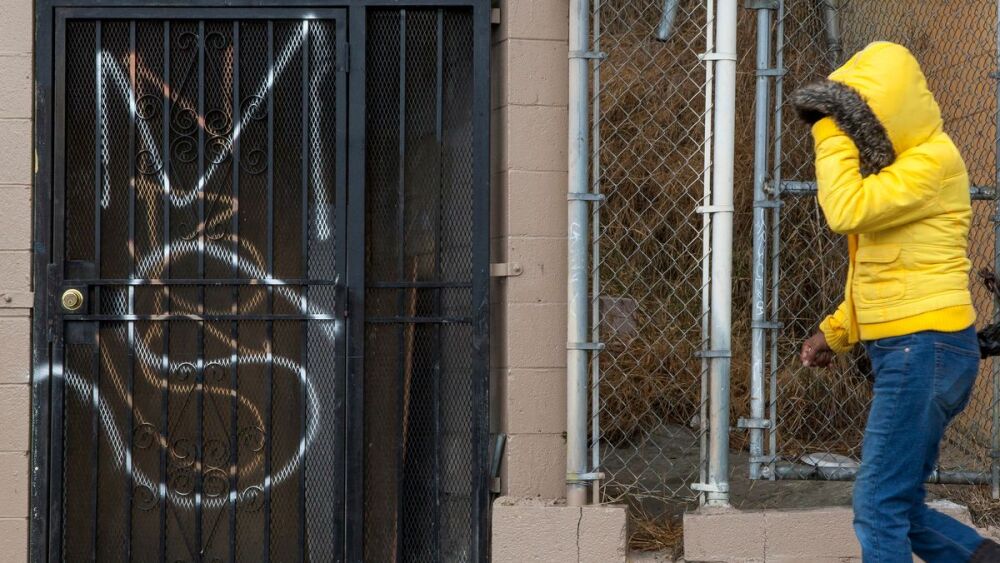Gang graffiti is one of the most misunderstood elements in gang investigations. It can literally mean nothing in certain instances, while in other circumstances it conveys important messages between gang members – both friend and foe.
Gang investigators need to be able to separate the important from the irrelevant. This starts with knowing the gangs in your jurisdiction, what they claim as turf and their monikers.
Here are some ways investigators can gain intelligence from gang graffiti.
No trespassing
A tag (gang graffiti) done by a gang in their own turf serves to define a gang’s turf, acting like a “no trespassing” sign to rival crews.
Rest in peace
“RIP” tags memorialize dead gang members. These can be good for gathering police intelligence regarding gang monikers. If you see an unfamiliar moniker pop up after a gang homicide, you can probably connect that victim with that tag. Occasionally gang members will list many of the monikers in conjunction with a RIP tag, sort of like a sympathy card.
In my jurisdiction, after a gang member was killed, several RIP tags sprung up. We conducted surveillance at his funeral and were able to confirm many of the gang member’s monikers by matching up the attendees to the names on the tags.
Cross outs
Much intelligence can be gleaned from a rival gang’s reaction to a tag. A cross out – crossing out, covering up or writing over a gang’s tag – is a flagrant act of disrespect and can often be an indicator of future violence between gangs.
Like an archeologist digging through layers of ruins, you must determine how many layers of cross outs you are dealing with. It’s important to photograph and document graffiti as soon as it pops up. This provides a rough time stamp as to when the cross out occurred. This can then be cross-referenced to acts of violence between rival gangs to try to determine who committed the act.
In certain instances, a rival gang member will use his moniker as part of the cross-out process, providing even more intelligence.
New locations
A tag in a new area may reveal that the gang’s turf has increased. Conversely, a tag in what you considered to be a rival gang’s turf that isn’t crossed out may indicate a shift in the balance of power between two gangs with one gang losing turf.
Signs and symbols
It’s important to know your gang’s signs and symbols – especially with subsets and cliques of the same gang. For example, a tag with the symbols of multiple subsets demonstrates unity.
You can learn about these signs and symbols from:
- Graffiti;
- Social media;
- Cell searches of jails;
- Probation/parole searches of gang member (juvenile gang members love to put these symbols in their school notebooks and elsewhere);
- Tattoos;
- Interviews with gang members.
Don’t make a common mistake of going on statewide or nationwide law enforcement gang websites to ask what a symbol means. The answer to that is going to vary from one jurisdiction to the next. A gang symbol in Colorado most likely won’t mean the same thing in Florida.
In the county where I work, I know of at least three gangs that claim the 500 block of a particular street as their turf, thus they use tags such as “500” or “500 blk.” Nationwide there are hundreds of gangs that also claim 500, so putting your request on blast will yield many answers unrelated to the crew you are investigating. So, learn your crew’s and subset’s symbiology!
As an aside, these LE gang websites are a great way to identify tattoos on gang members from another jurisdiction. Just make sure to identify where a gang member is from.
Sometimes it’s just graffiti
Generally younger gang members do most of the tagging. These tags may not be sanctioned or authorized by more senior gang members. Peewee gangsters, excited to demonstrate their affiliation with a gang, will tag almost anything. More senior gang members, especially those who have been through the courts after being charged with a gang enhancement, may frown on the practice. This can be especially true with crews that focus on money-making schemes like drug dealing. Having to respond violently to cross outs from rival gangs cuts into the bottom line.
Finally, know when to recognize graffiti as non-gang related. They paint the picture; it’s up to you to interpret it.



